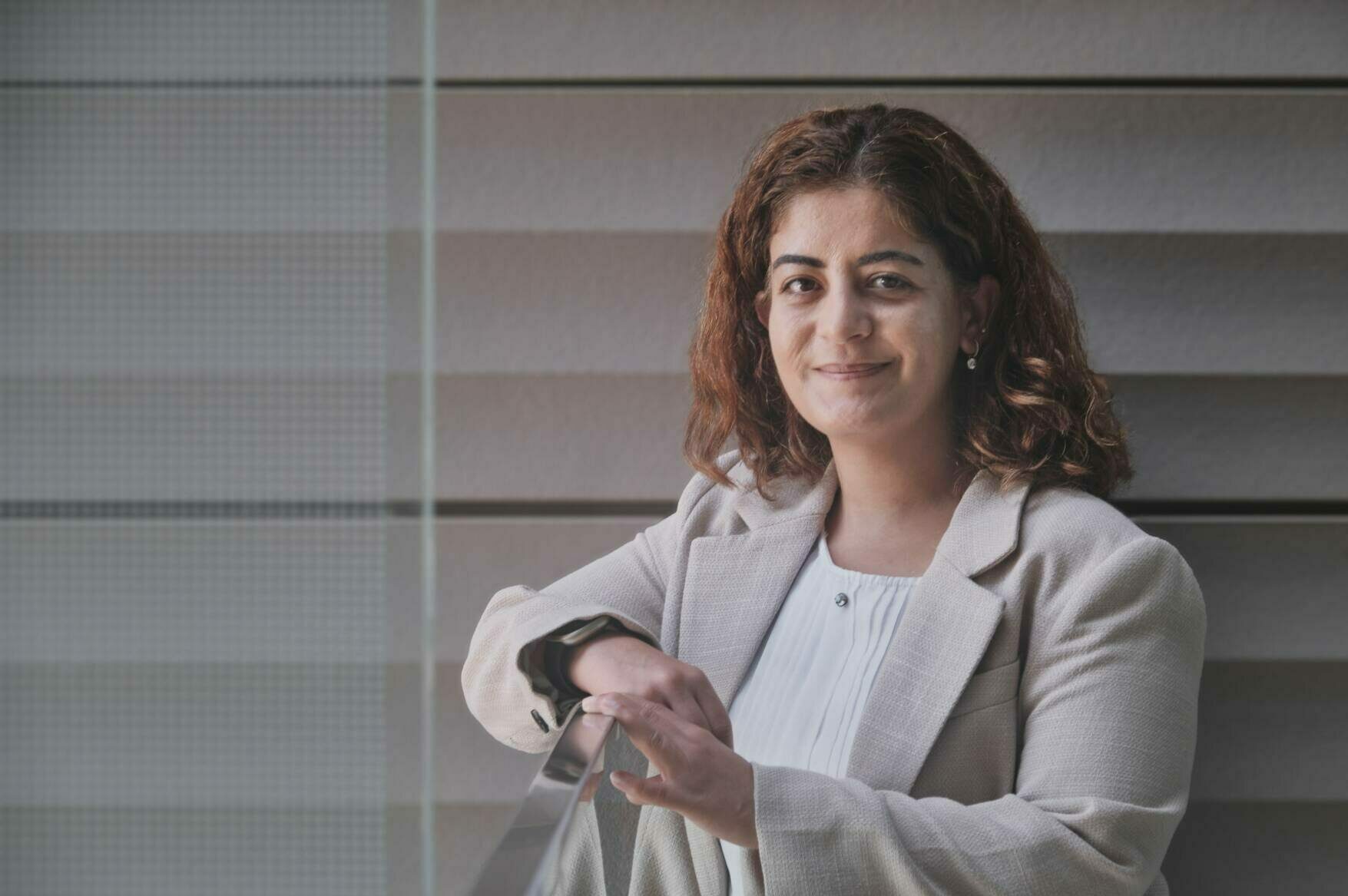Born in Bulgaria to Palestinian parents, Leena Ali Ibrahim was educated in Bulgaria and India. After completing her Ph.D. and postdoc placement in the United States, she is now continuing her research journey at KAUST in Saudi Arabia.
Ibrahim’s career journey began in a way that many would consider unconventional, and her research is equally extraordinary.
When Ibrahim was doing her Ph.D. at the University of Southern California, she identified connections between auditory and visual neurons in the top layer of the brain’s cortex that may help to combine the powers of the senses to boost sensory perception.
She explains this with the example of the cocktail party effect, where a person is having difficulty hearing what someone else is saying due to background noise at a social gathering. The act of looking at that person helps to tune out some of the noise and improves the ability to understand what they are saying. “There are lots of interactions between different sensory modalities that try to increase our signal-to-noise ratio to help us comprehend something in our visual environment,” she says.
“The act of looking at that person helps to tune out some of the noise and improves the ability to understand what they are saying.”
Ibrahim’s Ph.D. research, published in Neuron in 2016, revealed a subset of inhibitory neurons in the top layer of the mouse visual cortex, called layer 1 interneurons, that are strongly connected by auditory nerve fibers and are excited by sound. These audio-visual interactions likely play a role in sharpening vision in the environment. This allows a mouse in a visually low-contrast environment, for example, to use sound from a moving predator to better see where it is coming from.
In her postdoctoral work, Ibrahim continued her fascination with layer 1 interneurons. Those investigations showed that the development of their connectivity after birth was significantly affected by the strength of inputs from neurons originating in the thalamus, the relay station in the brain that processes sensory information from the body.
This information could have implications for people with neurological disorders, such as autism or schizophrenia — an area where much of Ibrahim’s work at KAUST is now focused.
People with autism can find it difficult to ignore noises that others are able to filter out as unimportant and not worth expending the brain’s resources on. With schizophrenia, people can experience visual and auditory hallucinations when there is no corresponding sensory input from the environment.
Ibrahim is exploring what happens to the brain’s circuitry that changes us from babies that get excited by any visual or auditory stimulus to adults who only react when experience tells us that something is worth our attention. This is what allows us to filter out the construction work on the other side of the road, but suddenly come to attention if we hear an explosion.
To do this, Ibrahim is using transgenic mice with neurons that are labeled so they fluoresce when activated. These mice are exposed to different situations, and specific nerves are turned on or off with drug injections. A special two-photon microscope is then used to look into the living mouse’s brain and see which neurons fire up under what circumstances and how that corresponds to a mouse’s attention. The research will also include RNA sequencing to identify what is happening in different neurons or across different mutant mouse models.
“What is it that is not allowing these neurons to connect properly in autism and schizophrenia? Can we identify synaptic deficits or other transcriptomic changes that explain why this is happening? Then we can either do gene therapy by targeting specific neurons or boost activity in the neurons that need a boost,” Ibrahim explains. In other words, the research could have implications for drug discovery.
“We can either do gene therapy by targeting specific neurons or boost activity in the neurons that need a boost.”
Her students are also examining the impacts of inflammation and stress on these circuits. During her postdoctoral research she inadvertently discovered that injecting too much of a virus tracer into her mice led to inflammation that killed a subset of layer 1 neurons.
This made her wonder if they were especially vulnerable to inflammation. “Could it be that early-life inflammation impacts these neurons? If so, how does it impact the circuits and then potentially impact our sensory perception and cognition as adults?” asks Ibrahim.
Ibrahim has the equipment. She has the research team. She has the questions. And she certainly has the ambition. No doubt Ibrahim will soon have some of the answers.

